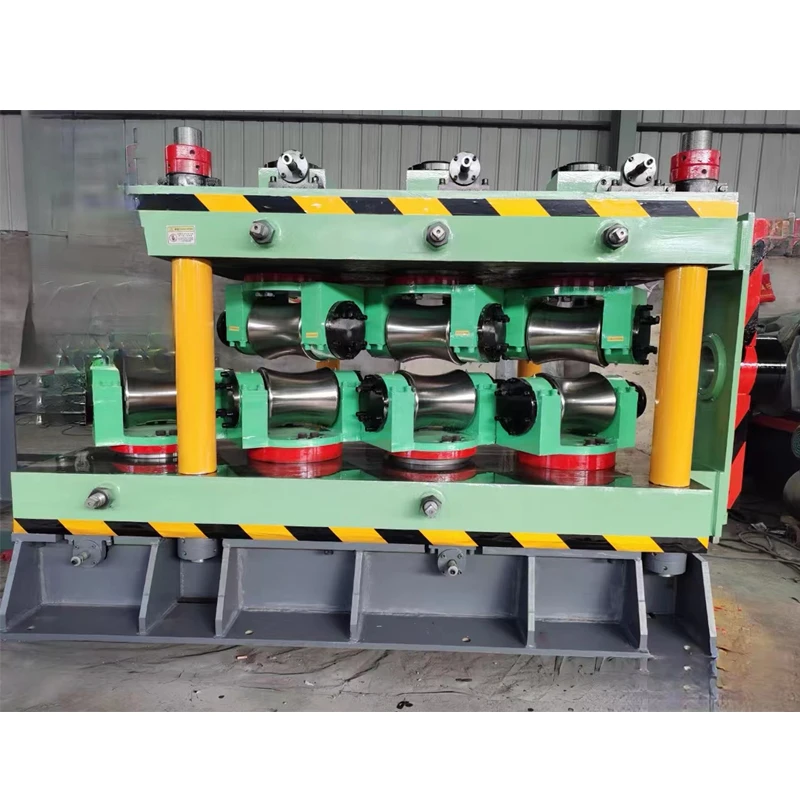Efficient Cladding Roll Forming Machinery for Modern Construction Applications
Understanding Cladding Roll Forming Machines
In the realm of modern construction and architecture, the need for innovative materials and efficient production methods has led to the rise of cladding roll forming machines. These machines play a pivotal role in the fabrication of cladding materials, which are essential for enhancing building aesthetics while also providing protection from environmental elements.
What is Cladding?
Cladding refers to the application of one material over another to provide a skin or layer that is both functional and decorative. Often used in buildings, cladding serves as a protective shield against weather, impacts, and corrosion, while also improving energy efficiency. The materials used for cladding can vary widely, including metal, wood, vinyl, and composites. Among these, metal cladding, particularly aluminum and galvanized steel, is frequently favored for its durability and low maintenance.
The Role of Roll Forming
Roll forming is a cost-effective manufacturing process used to create long parts with consistent cross-sectional shapes. It involves feeding a metal strip through a series of rollers that gradually shape the material into the desired profile without cutting or wasting excess material. This process is particularly well-suited for producing bespoke cladding components that require a high degree of precision and uniformity.
Cladding Roll Forming Machines
Cladding roll forming machines are specialized equipment designed specifically for producing cladding panels of various shapes and sizes. They come equipped with multiple rollers that mold metal sheets into specific profiles suited for cladding applications, such as standing seam panels, flat panels, or intricate decorative designs.
cladding roll forming machine

One of the primary benefits of these machines is their ability to automate production, significantly increasing efficiency. By reducing manual labor and minimizing waste, manufacturers can produce high volumes of cladding materials in a timely fashion, ensuring that projects are completed on schedule.
Advanced Features and Technology
Modern cladding roll forming machines incorporate advanced technologies, such as computer numerical control (CNC) systems, which enhance precision and flexibility. Operators can easily adjust settings to accommodate different specifications or profiles, allowing for a wide range of design options. Additionally, some machines include integrated cutting and punching systems, further streamlining the manufacturing process by eliminating the need for separate operations.
Moreover, many machines are designed with user-friendly interfaces that facilitate easy operation and monitoring. This ensures that even those with limited technical expertise can successfully operate the equipment, thus widening the accessibility of roll forming technology.
Environmental Considerations
In recent years, there has been a growing emphasis on sustainability in the construction industry. Cladding roll forming machines contribute to this goal by utilizing materials that are recyclable and energy-efficient to produce. The process minimizes waste, and the durability of the final products means that they can have a longer lifespan, reducing the need for frequent replacements and thus conserving resources.
Conclusion
Cladding roll forming machines represent a significant advancement in the production of building materials. By combining efficiency with precision, these machines enable manufacturers to meet the ever-growing demands of modern construction while adhering to sustainability principles. As architects and builders continue to seek innovative solutions for their projects, cladding roll forming machines will undoubtedly remain crucial players in shaping the future of construction and design.
-
High Frequency Straight Seam Welded Pipe Production Line-BzZhou Xinghua Machinery Equipment Manufacturing Co., LTD.|Precision Welding, High EfficiencyNewsJul.30,2025
-
High Frequency Straight Seam Welded Pipe Production Line|BzZhou Xinghua|Precision Welding&EfficiencyNewsJul.30,2025
-
High Frequency Straight Seam Welded Pipe Production Line - BzZhou Xinghua|Precision Engineering&EfficiencyNewsJul.30,2025
-
High-Frequency Straight Seam Welded Pipe Production Line-BzZhou Xinghua Machinery Equipment Manufacturing Co., LTD.NewsJul.30,2025
-
High-Frequency Straight Seam Welded Pipe Production Line-BzZhou Xinghua Machinery Equipment Manufacturing Co., LTD.|Precision Manufacturing, High EfficiencyNewsJul.30,2025
-
High Frequency Straight Seam Welded Pipe Production Line-BzZhou Xinghua Machinery Equipment Manufacturing Co., LTD.|Precision Steel Pipe Manufacturing&Industrial EfficiencyNewsJul.29,2025


